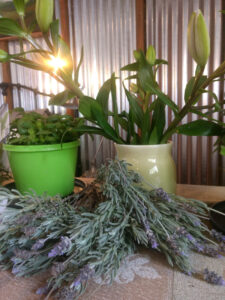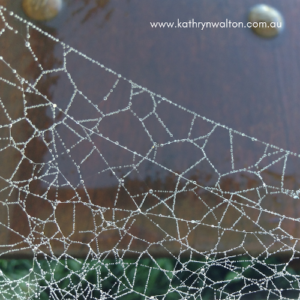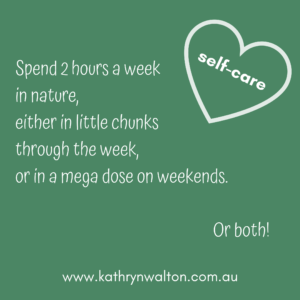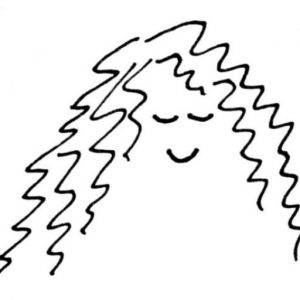“The more you look, the more you notice.”
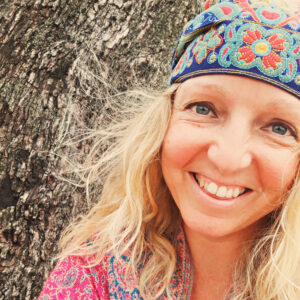 This is the transcript from Season 2, Episode 4 of the Outdoors is my Therapy Podcast with my friend Krista Bjorn.
This is the transcript from Season 2, Episode 4 of the Outdoors is my Therapy Podcast with my friend Krista Bjorn.
Nature’s Little Treasures
Kathryn: Hello and welcome back to The Outdoors is My Therapy podcast. I’m your host, Kathryn Walton. This is series two and each episode you’ll get to meet one of my friends who’ll share what inspires them about the outdoors. Each episode is just a few minutes long, like a little snack of information and inspiration that feeds your mind and your heart and reconnects you with the therapeutic benefits of the outdoor world.
Intentionally spending time in the outdoors each day can add amazing value to your life, including your mental health. And whilst nature is not a cure for all sorts of health issues, we do often neglect the fact that spending time in nature or connecting with nature in other ways can help us to feel better.
Why is it that we rush through the day sometimes without even a thought about the natural world around us? And how can we move from knowing that we’ll feel better if we get outside for a walk or a stretch to actually doing it? Sometimes it takes a bit of time and energy investment, but I’m here to remind you, and I’m here to remind me as well, that you open yourself up to multiple health benefits when you choose to invest and connect with nature in ways that bring you joy. The research backs up what you and I already know you stand to have improved attention, reduced stress levels, increased energy and vitality, a boosted mood and improved sleep.
Nature connection also promotes recovery from stress, and it can buffer stress in ways such as lowering your heart rate and your cortisol levels, and improving your immune functioning, and unlike a lot of things, nature is reasonably accessible for many people. And what I mean by this is that yes, you can be physically active in the outdoors and that’s great if you can be, but you can also connect with nature when you sit or lie down with a view of the outdoors.
When you have natural objects in your home or your bedroom or maybe your hospital room such as pot plants or seashells, even pets, and when you take the time to look through photos, watch videos, or view artworks that represent nature.
So if you live in a place where it’s not safe to be outside or you’re not able to go out, or maybe you are feeling unwell, there are many opportunities for you to connect with nature and enjoy the benefits, and even brief contact with nature can make a difference to your mood.
Today’s conversation is with my friend Krista Bjorn, who shares why nature is so important to her. Krista has a particular love of herbs and other plants that are beneficial for healing and nutrition, as well as adding beauty to the spaces around her. She shares her favourite place in the world and has some really practical advice about how nature can support you during stressful times and when you’re not feeling well enough to venture outside as well. We talk about how Krista learned to notice the little treasures in nature and how that led her to capture them through photography and to share them with the world.
Meet my friend Krista.
Hi Krista, and welcome to the podcast.
Krista: Hi Kathryn. Thank you so much.
Kathryn: Krista, what inspires you about the outdoors?
Krista: Oh, it is life to me, . Every day I wake up and the first thing I do is look outside at our trees and the bush and the meadows and the paddocks, and I just sit and watch the light come over the land. And I love, especially just knowing that no matter what’s happening in the world, our little piece of land is peaceful and quiet and beautiful, and that no matter what, how hard a day I have, I’m coming home at the end of the day and seeing the sunset and the incredible light and shadows of the trees, it just makes everything peaceful and happy again.
Kathryn: What’s your favourite part of your garden?
Krista: Oh, I really, really love the herbs and things that I have in my garden. So many of them are really precious to me because just looking at them brings so many memories, um, of, uh, harvesting the different berries, the roots, the leaves, the flowers for different things. And, sitting on the back veranda with friends as we pick off the tiny little flowers or scrub the roots and chop them up and get them ready for different remedies and things like that. And so when I see them, I don’t just see plants. I, I don’t just see the beauty of it, but I see, I see the healing that it can bring, to our bodies and our minds and our spirits. And so when I see them, it gives me a sense of purpose and excitement and, hope for the future, I guess. Just knowing that whether, I’ve got a headache or something, there’s something in the garden that will help us feel better.
Kathryn: Can you tell us a little bit more about how you are using those herbs and sharing them with the community?
Krista: Oh, yes. Well, I write books with all sorts of different recipes in them for people who like to make things on their own, and then I teach workshops where I show people how to actually make things from scratch. So when they show up at a workshop, I’ve got all these bowls and jars full of, dried fruits and berries and leaves and um, chopped up roots and spices that just smell amazing. So we’ll just sit there for a few hours and mix and blend and bubble and brew and make all these amazing concoctions that they can then take home.
And then there are people who don’t want to do any of the work, , and they just love, um, love to take the medicines like elderberry cordial or elderflower tea or borage infused wine or whatever it is. And so a lot of people will just contact me and just say, “Krista, can I put an order in for elderberry cordial? My kids are heading back to school and I just wanna help their immunity be as strong as possible” – that kind of thing. And so, then I’ll make up batches for them, and do that sort of thing.
Kathryn: You’ve also done a bit of travelling around the world, so you’ve seen a lot of places, you’ve lived a lot of places. What’s your favourite spot in the outdoors?
Krista: Oh, goodness. Yes. I was a food and travel writer for quite a few years, and um, I think one of my very, very favourite places on the planet is Albania because I went there not knowing anything about it at all, and it was so spectacularly beautiful with incredible mountains and, uh, crystal clear rivers and lakes and so much wilderness and these hillsides just covered with millions of wildflowers. And I just loved it there. At the time that I went, which was probably 10, 15 years ago now, um, it, it was not as advanced technologically and so it was really wild. And the places that you could go, you wouldn’t see any towns, any villages, any people, anything, um, at all. And I just loved it. I loved being out there with my friends and, um, going down side roads and ending up in crazy places and everything was beautiful.
Kathryn: That sounds just so, so beautiful.
Krista: Yes, it really was. It was like something out of a fairytale. I loved it.
Kathryn: Is there anything else that you’d like to share with us about your love of the outdoors? Krista?
Krista: Oh, I just, I love nature so much. No matter what I’m going through in my life, whether it’s stressful or, I dunno, things with covid or politics or all the things that conspire to, upset our equilibrium or make us anxious or distract our thoughts, getting out into nature. Every single time it calms me. It centers me, it settles me. It, um, it focuses me on the present and, allows me to calm and focus my thoughts so that I can do the work that I’m meant to do instead of getting distracted by the, the worries and anxieties and problems of things that I have no control over whatsoever.
Kathryn: Krista, I’m wondering if you’ve got any words for advice for people who maybe aren’t very mobile, or maybe not well enough to step outside and go for a walk outside. How can they connect with nature?
Krista: Yeah. I actually have a lot of experience with this because I’ve had some pretty epic, um, health issues and there were times that I could not get out of bed, let alone go for a walk in the woods and. So in those moments, I have really beautiful picture books of wonderful gardens and, places like Venice or Copenhagen or, just different places around the world that I can, even when I’m dreadfully ill, I can sit up in my bed and open these books and be transported to gorgeous places with incredible light and beauty and wonder and magic. Other times I will rent, or borrow DVDs from the library. I really love, um, Monty Don’s Gardens, when he travelled through France and Italy and other places. Again, those transport me and even if you aren’t mobile, even if, um, you’re going through a really hard time, we can often sit or stand or look out the window. And there’s always an option and that’s what I like to look for. A friend of mine said to me once, “Keep calm and look for options.” And that’s what I like to do.
Kathryn: One thing that I often talk with people about is finding the little treasures in nature. And Krista, I think that you are just like the queen of finding the little treasures in nature through your photography, through your Instagram account. Could you tell us a little bit about your photography?
Krista: Oh, absolutely. I didn’t start out as a photographer, but about 15 years ago, I was healing from a really traumatic situation in my life. And a friend of mine encouraged me to post one photo a day of something that brought me joy. And she said, because if you can find even one thing a day, it will motivate you to keep living, to keep healing, to keep growing, and to keep hoping that things will get better. And she was right and it brought me so much joy to, either go outside or go into my kitchen or even, um, just in my bed, look around my bedroom and look at something that made me happy. And I started noticing so many amazing things. If you just sit on the ground and just limit your vision to the things that are around you, all of a sudden you’re discovering these incredible seed pods and grasses and interesting looking sticks or a really gorgeous rock with interesting markings on it. And all of a sudden your, I guess your big picture view is, um, brought down to something really amazing. And it’s almost like a meditation that it, um, focuses your mind. It calms and settles your mind. And so that’s just how I started. I just started taking photos of things that brought me joy and through that practice, through that daily daily habit, I got better and better. And now I think my eye just naturally gravitates to beautiful things. And whether it’s a flicker of light or, um, I don’t know, or a flower or, um, even an interesting crack in the pavement that looks like, I don’t know, an animal or something. Um, the more you look, the more you notice.
Kathryn: One thing that I really love that you take photos of is droplets of water. And that I think really meant a lot to me because coming through the drought that we had that just seemed like forever
Krista: Yeah.
Kathryn: And you would share photos of your garden and when you watered the garden and, and you’d take photos of the droplets, or if we had one of those rare showers of rain or there was some dew on the leaves or on the flowers, and I, I think, you know, there’s a whole world in that one droplet of water that you can capture.
Krista: Absolutely. Oh, the drought was so painful for me as well as it was for all of us. And there were days that I would, get up and look outside and just cry because it was so desolate and thankfully I was able to get some water out of our bore and my friend calls them Krista’s Green Stripes , because I would set up one drip hose on the grass and that’s all I watered the whole time was just one stripe of grass so that we could go stand out barefoot on one stripe of green grass and that I could go out there and see droplets of water, um, when I would turn the little spray on for a little bit, and just to see that life, that water, that incredible light, when the sun comes up and shines through the droplets of water on the grass, it gave me courage to keep going.
Kathryn: Thank you, Krista for sharing so many stories from your life, connecting with nature, connecting with the outdoors, I think you’ve just shared so many little treasures with us today that will be inspiring for other people to take on board and give them, you know, a little lift on their own healing journey or on their own journey towards thriving in life. So thank you so much for that.
Krista: Oh my absolute pleasure. I loved it. Thank you.
Kathryn: Thanks for tuning into The Outdoors is My Therapy podcast. We hope you feel inspired to connect with the outdoors no matter how big or small your adventures might be. If you’re looking for more inspiration or you’d like to connect with others in the outdoors is my therapy community. Check the show notes for all the links.
You can listen to the episode “Nature’s Little Treasures” here:
LINKS
Follow Krista on Instagram @ramblingtart
Contact Kathryn via her website
Grab your free Guide to a Perfect Nature Escape Day when you subscribe to the Grounded Inspiration newsletter (limited time)

